El Escorial

We started out early this morning to walk from our hotel to the Julia Bus Company office on the Gran Via. We had to be there by 8:45 a.m. to go on a morning escorted tour to El Escorial and the Valle de los Caidos (Valley of the Fallen). Both are within 40 miles from Madrid. When we were in Madrid, it didn’t get light until after 8 a.m. and it remained chilly until later in the morning. The Spanish seem to start their day late (especially on a Saturday morning), so our walk to the Julia Bus Company was a bit creepy so early, with few people on the street. We had a very good tour director, who gave the tour in both Spanish and English––I guess tourists from all over are expected to understand at least one of these two languages. This photo is of the Monasterio de San Lorenzo de El Escorial, a place built by King Philip II in the 16th century. He both ruled his empire and directed the Inquistion from here. It was built in a new unadorned style, which became influential in Spain.

El Escorial
El Escorial
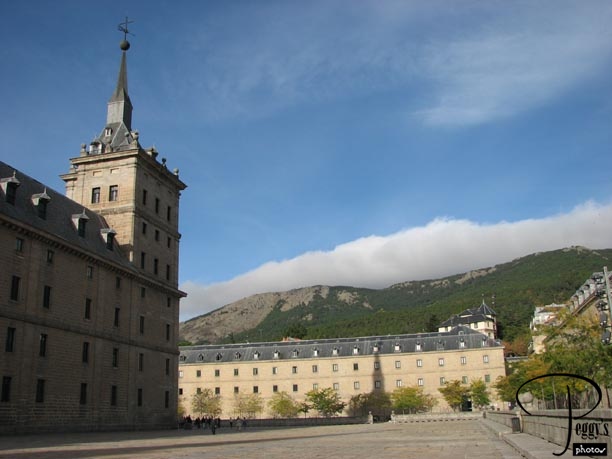
Another view of El Escorial located in the foothills of the Sierra de Guadarrama. It measures 650 by 500 feet and has 2600 windows, 1200 doors, and more than 100 miles of passages.

El Escorial
El Escorial
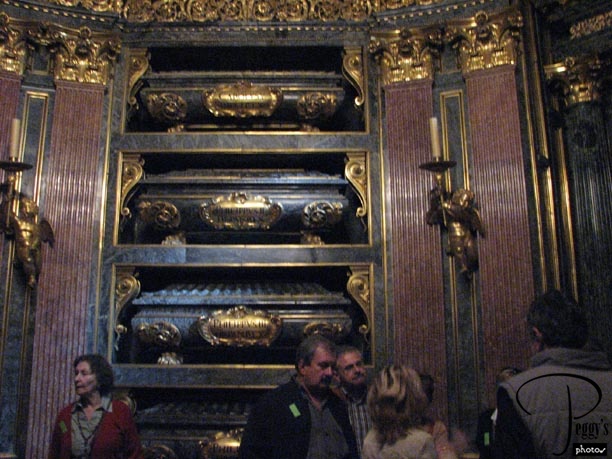
El Escorial was built as a retreat for the royal family and also as a royal mausoleum. All of Spain’s kings (and queens) starting with Carlos I, father of Philip II, are buried here. A royal body must decompose for several decades before its burial in one of these caskets. The next in line for burial is Victoria Eugenia, grandmother of the present king, Juan Carlos. She died in 1964. There is no longer room in the mausoleum for the present king and queen. I have put the rest of my photos of El Escorial (except for the next two) on a slide show on this website: Go to Slide Shows, Western Europe, Spain–1, “Near Madrid: El Escorial.”

El Escorial
El Escorial
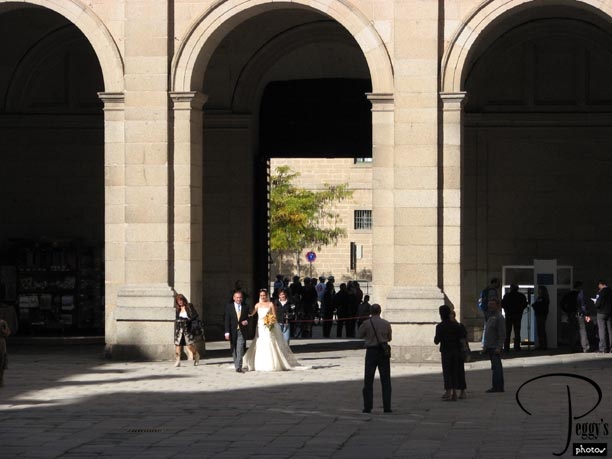
We weren’t given much time in the Basilica as a wedding was soon to be held there. We were told that anyone can arrange to be married in the Basilica. Our tour group started taking photos of the bride and her father in the courtyard. I took one too many photos as when I finished my photo–taking my tour group was missing. I stayed for some time where I had last seen them and then checked the bathrooms and the gift shop, which, of course, is when Merrie and the tour director must have checked in front of the Basilica. But I did have a brillant idea––Merrie and I both had bought triband phones from a Rail Europe site so that if either of us had gotten lost we could call the other one. So I called Merrie, but she had her phone turned off. But at least when Merrie and the tour director finally did find me, I was able to tell the tour director that I had called Merrie and I rose in our guide’s esteem––sorry Merrie. Actually, the tour director was just about to give up on me when they found me, but Merrie said that she wouldn’t have left me. But we did know that we could get back to Madrid by bus––this is an easy place to get to and you may want to go on your own as our tour did not take us to all the rooms in El Escorial that allow visitors. However, if you want to go on to the Valley of the Fallen, this is a bit difficult but possible by taxi cab. Photo of the bride and her father.

El Escorial
El Escorial
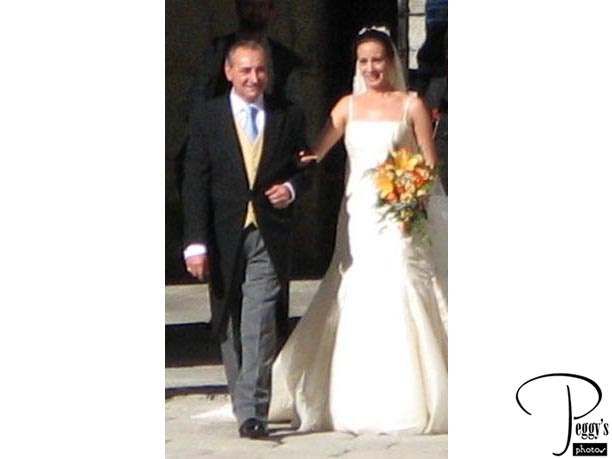
A close–up of the bride and her father.

El Escorial
Valle de los Caidos
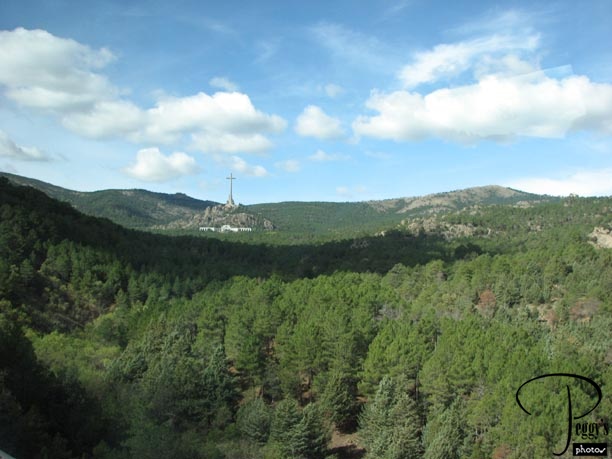
The Valle de los Caidos (Valley of the Fallen) is about six miles from El Escorial in the Guadarrana Mountains. It consists of a 500–foot–tall granite cross above an underground monument and is dedicated to the victims of the Spanish Civil War (1936–1939). The cross is directly over the dome of the underground basilica. Franco was responsible for the building of the Valle de los Caidos. This photo of the cross and the entrance to the basilica was taken from a distance.

Valle de los Caidos
Valle de los Caidos
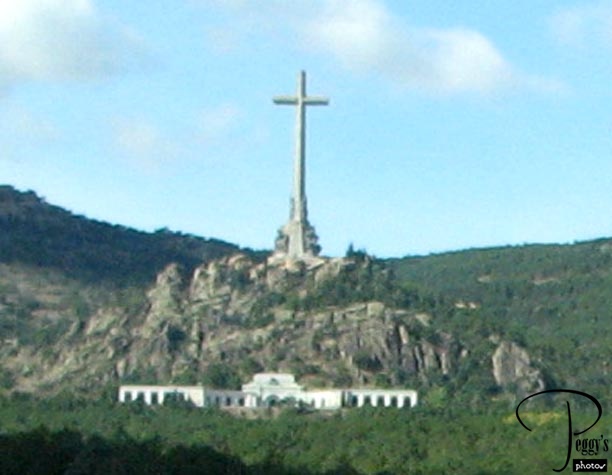
A blow–up of the Valle de los Caidos.

Valle de los Caidos
Valle de los Caidos
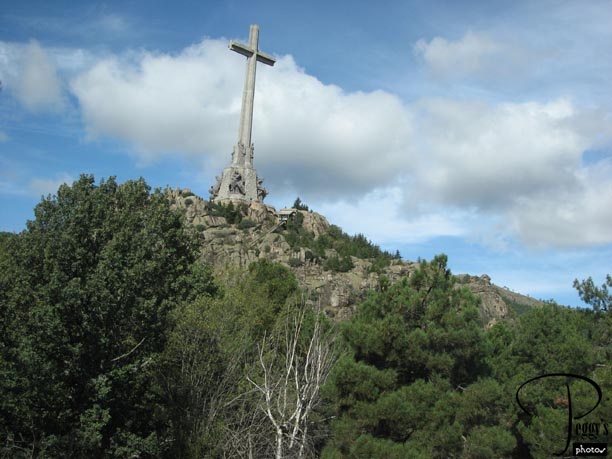
The 500–foot–tall cross.

Valle de los Caidos
Valle de los Caidos
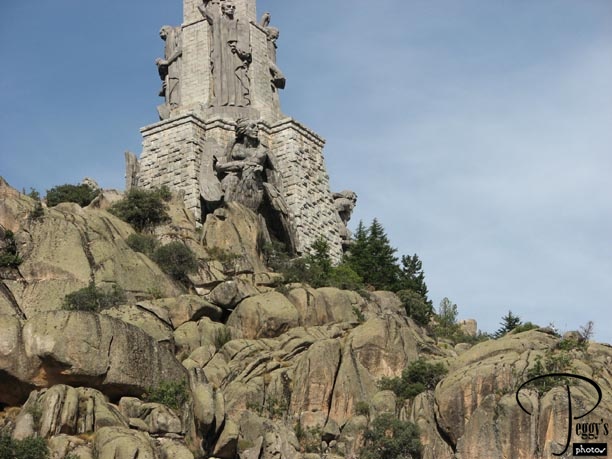
Close–up of the statues at the bottom of the cross.

Valle de los Caidos
Valle de los Caidos
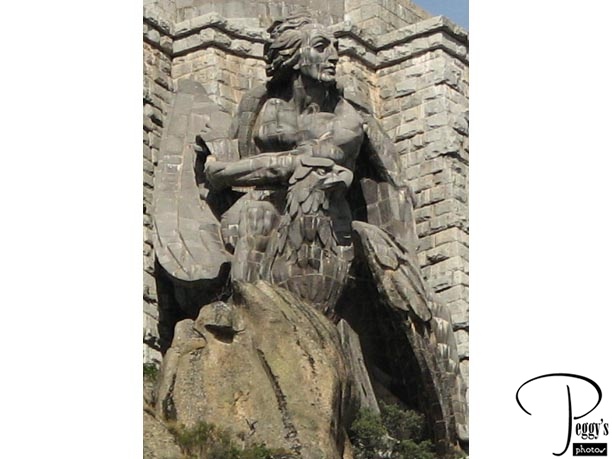
Close–up of one of the statues. She appears to have feathers.

Valle de los Caidos
Valle de los Caidos
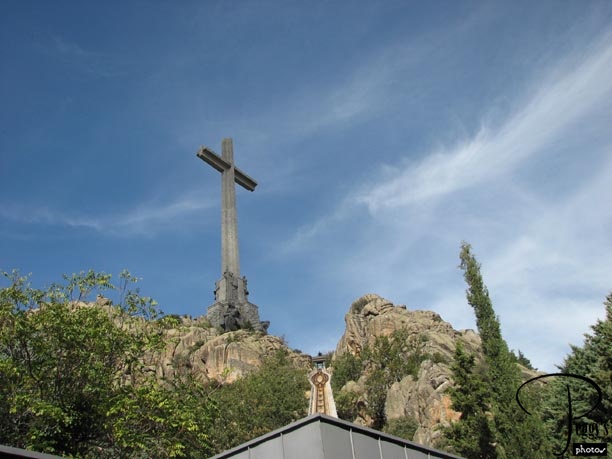
Another view of the cross. You can see the funicular up to the top of the hill. A funicular ride was not included in our tour.

Valle de los Caidos
Valle de los Caidos
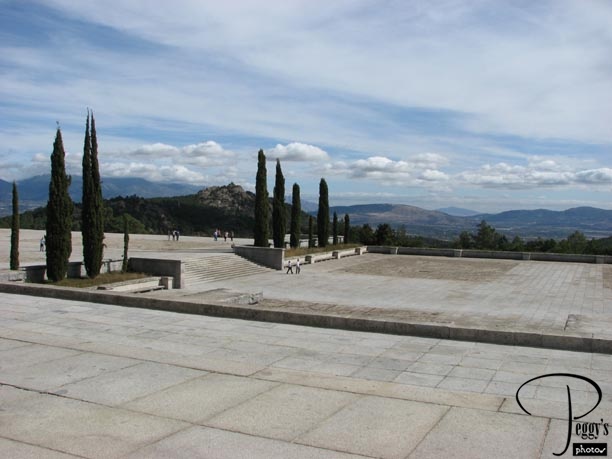
View of the mountains in front of the basilica.

Valle de los Caidos
Valle de los Caidos
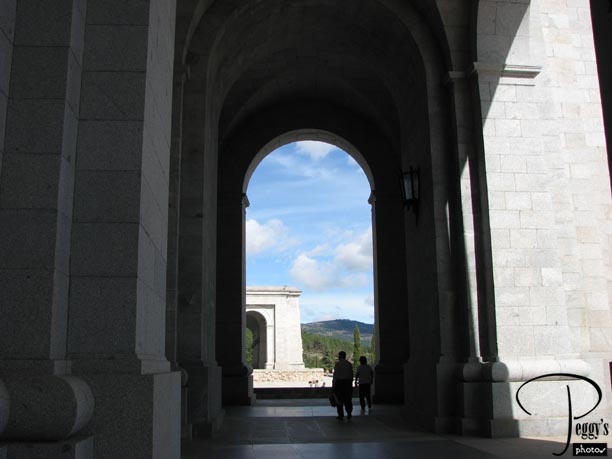
View through the columns walking to the entrance.

Valle de los Caidos
Valle de los Caidos
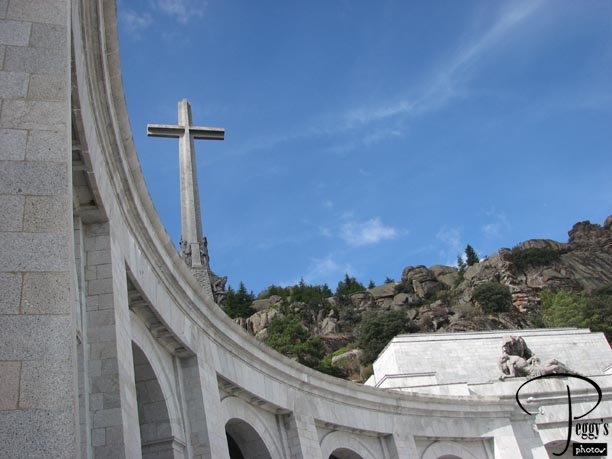
View of the cross over the basilica.

Valle de los Caidos
Valle de los Caidos
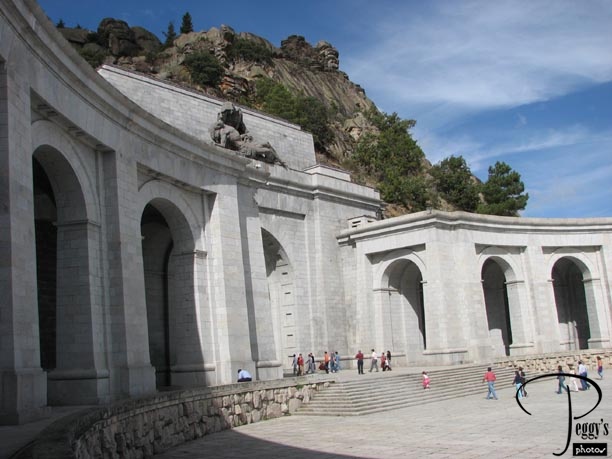
View of the entrance to the basilica and the pieta statue.

Valle de los Caidos
Valle de los Caidos
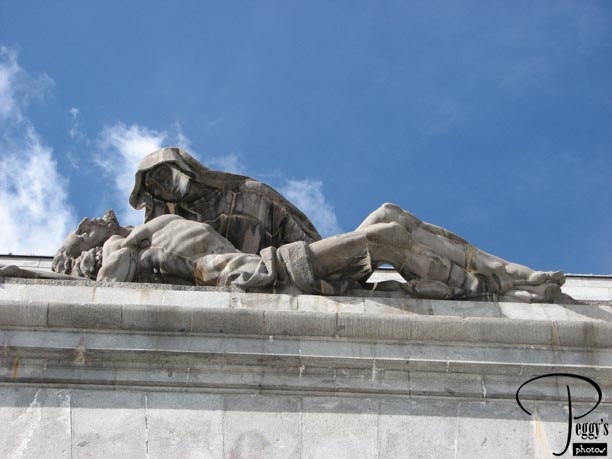
Close–up of the pieta statue.

Valle de los Caidos
Valle de los Caidos
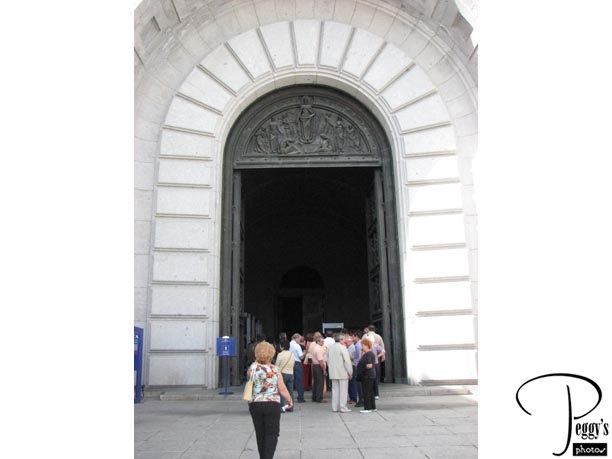
Entrance to the basilica.

Valle de los Caidos
Valle de los Caidos
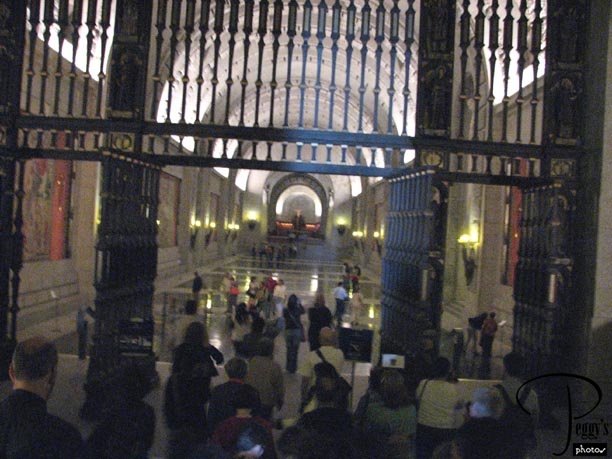
Entering the underground basilica.

Valle de los Caidos
Valle de los Caidos
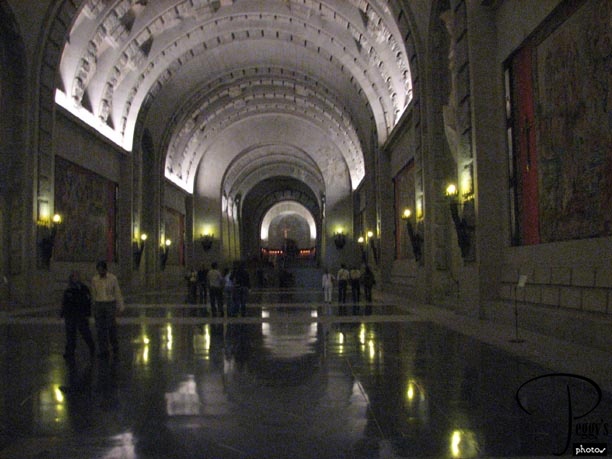
Farther along.

Valle de los Caidos
Valle de los Caidos
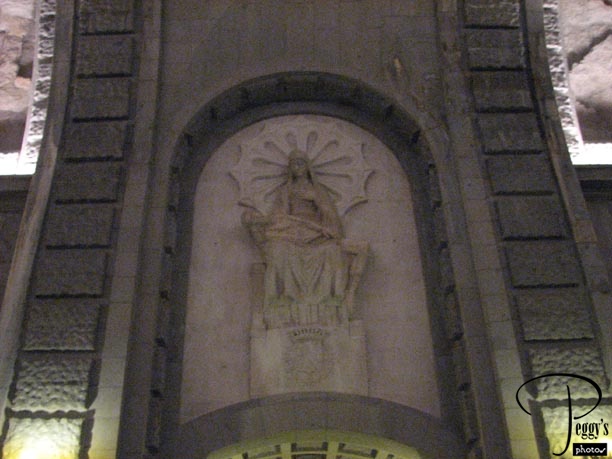
Relief on a wall of the basilica.

Valle de los Caidos
Valle de los Caidos
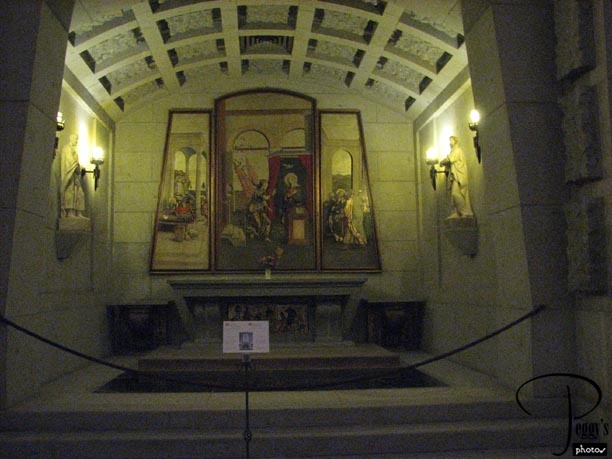
One of the small chapels in the basilica.

Valle de los Caidos
Valle de los Caidos
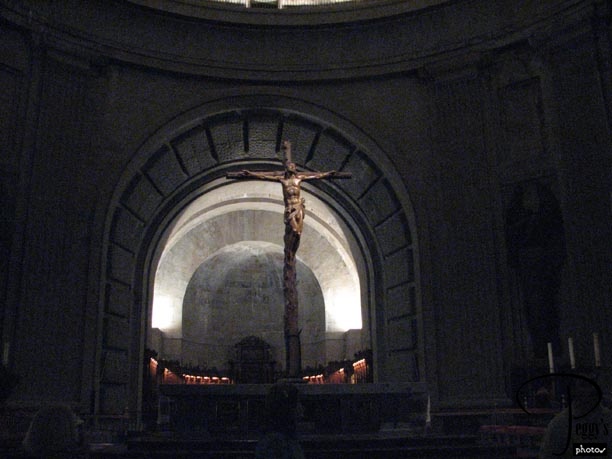
Cross under the dome. The cross outside on the hill is directly over the dome.

Valle de los Caidos
Valle de los Caidos
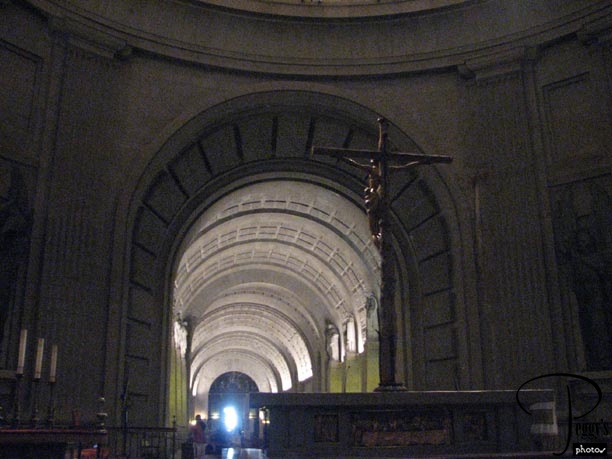
View back to the entrance.

Valle de los Caidos
Valle de los Caidos
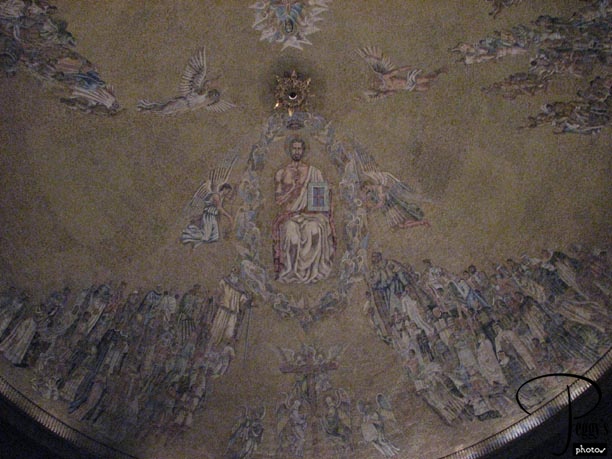
Inside the dome.

Valle de los Caidos
Valle de los Caidos
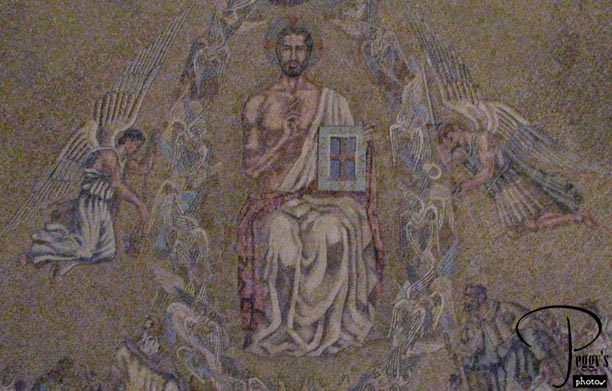
Close–up of inside the dome.

Valle de los Caidos
Valle de los Caidos
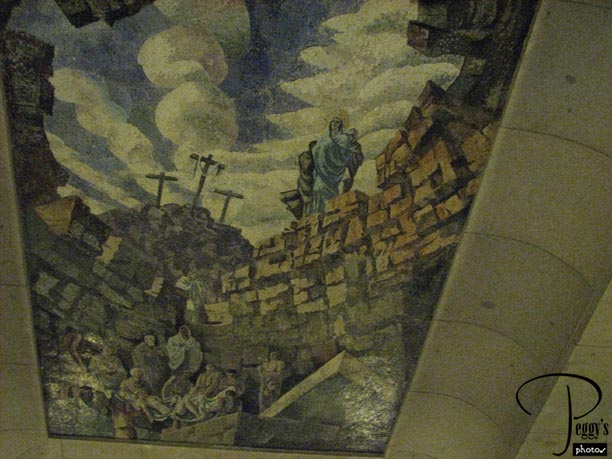
Another fresco.

Valle de los Caidos
Valle de los Caidos
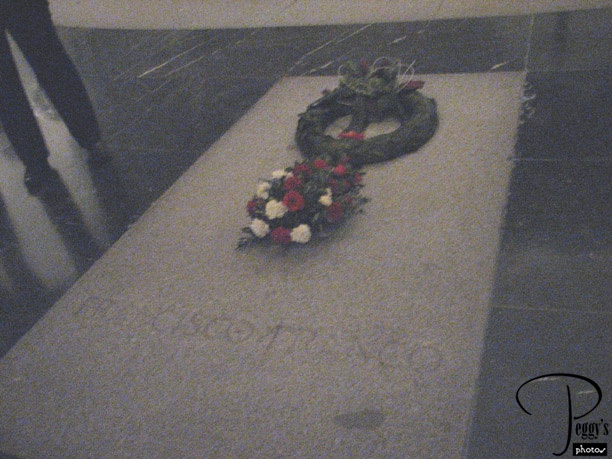
In this area is the grave of Francisco Franco. There is present controversy as to whether Franco’s grave should remain in the Valle de los Caidos. Another controversy is to whether any ceremonies here for Franco should any longer be allowed. Buried here are also more than 40,000 soldiers who died in the Spanish civil war.

Valle de los Caidos
Valle de los Caidos

Looking back at the entrance.

Valle de los Caidos
Valle de los Caidos
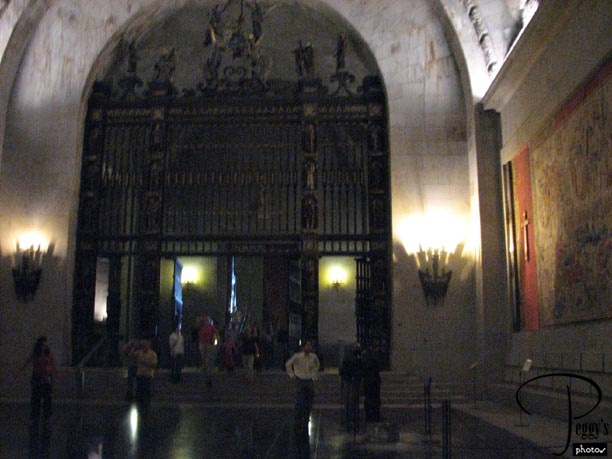
The doors from the basilica.

Valle de los Caidos
Valle de los Caidos
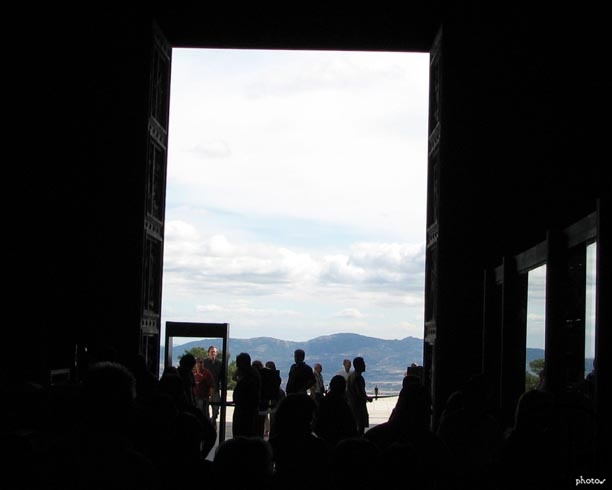
View through one of the doors.

Valle de los Caidos
Madrid
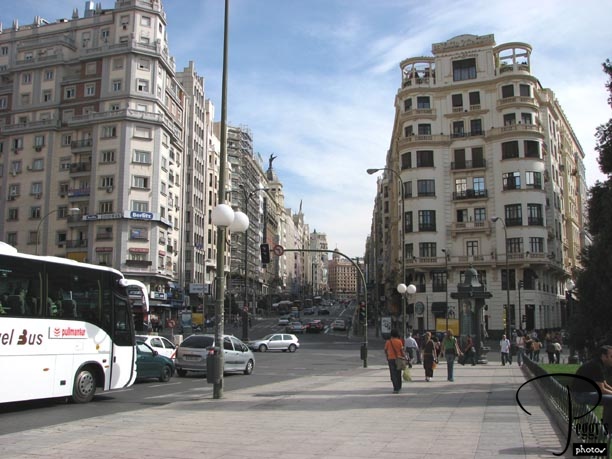
Our morning tour brought us back to Madrid––to the Gran Via––at 2 p.m.––probably still morning in Spain. The photo is of the Gran Via.

Madrid
Madrid
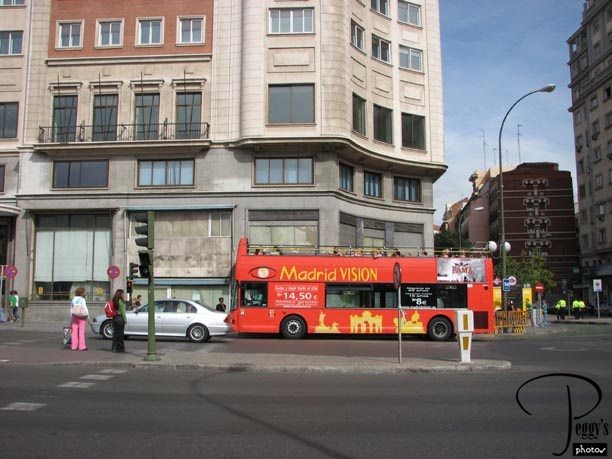
One of the Madrid Vision’s hop–on hop–off buses, which we took two days ago, passed by.

Madrid
Canas y Tapas
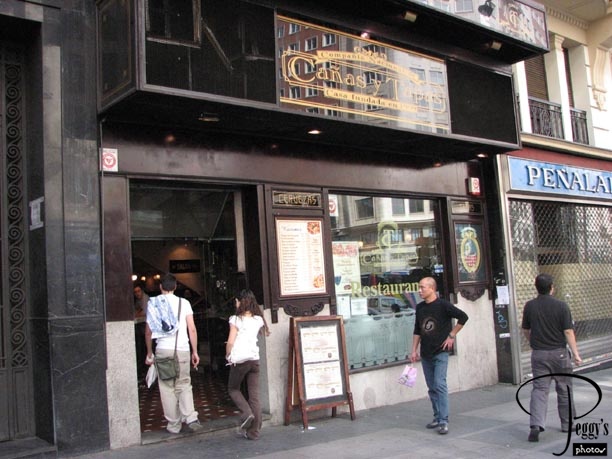
We saw this branch of Canas y Tapas on the Gran Via and decided to have lunch here.

Canas y Tapas
Canas y Tapas
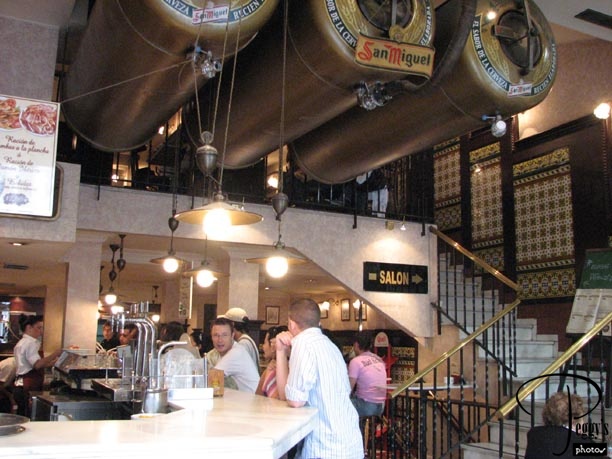
The canas (beer) being served here is San Miguel.

Canas y Tapas
Canas y Tapas
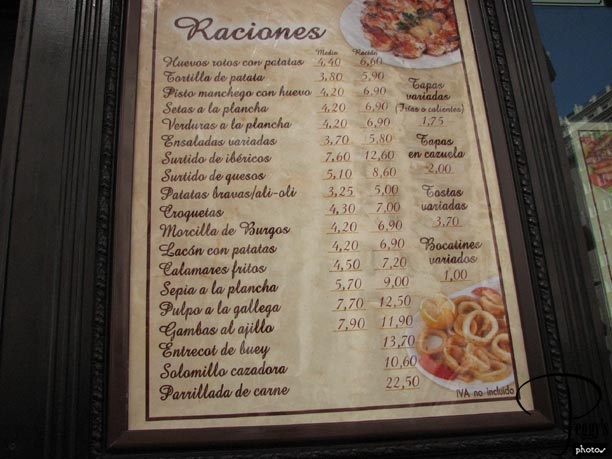
The raciones/tapas menu. We asked for an English–language one.

Canas y Tapas
Canas y Tapas
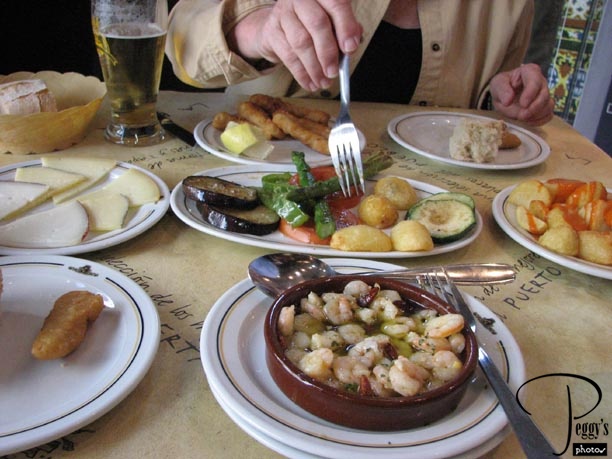
Our tapas meal: vegetable plate (I didn’t try it), fried cod (delicious), shrimp in garlic sauce (good but not as good as in Toledo), potatoes with hot sauce (really good and spicy), and Spanish cheeses (quesos). The middle cheese is a hard sheep cheese called manchego and is absoultely delicious. I was able to buy it (aged 12 months) both at Bristol Farms and at Whole Foods, Whole Foods selling it at $2.00 a pound less than Bristol Farms.

Canas y Tapas
Canas y Tapas
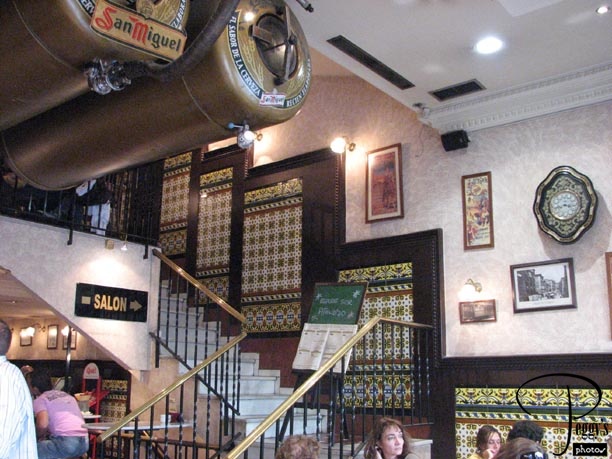
Some of the tiles in the restaurant.

Canas y Tapas
Plaza de Espana
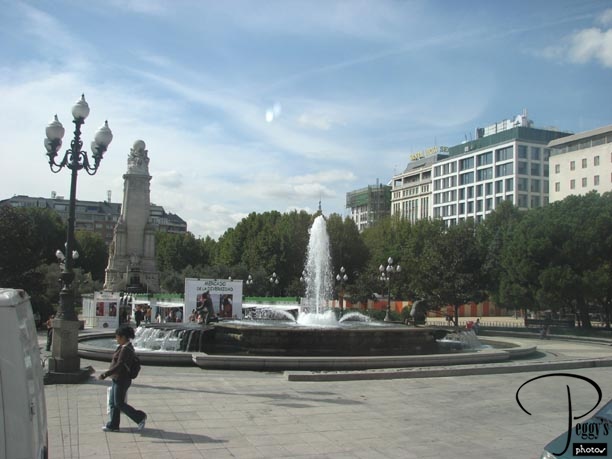
Our tour bus had passed the Plaza de Espana and we saw that there was a Mercado de la Diversidad that looked interesting in the plaza. It was not far from the Canas y Tapas. Photo of the Plaza de Espana.

Plaza de Espana
Plaza de Espana
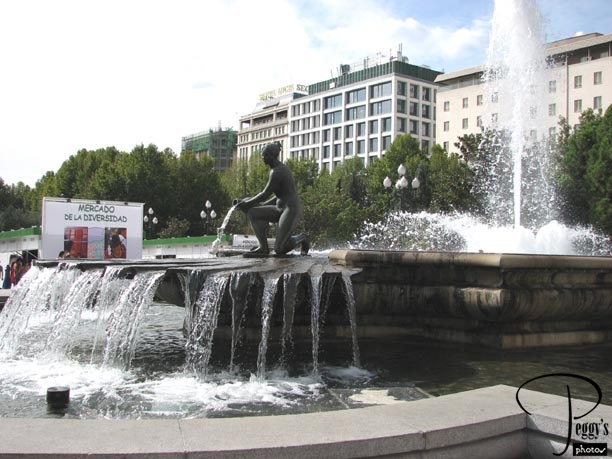
One of the fountains in the plaza.

Plaza de Espana
Plaza de Espana
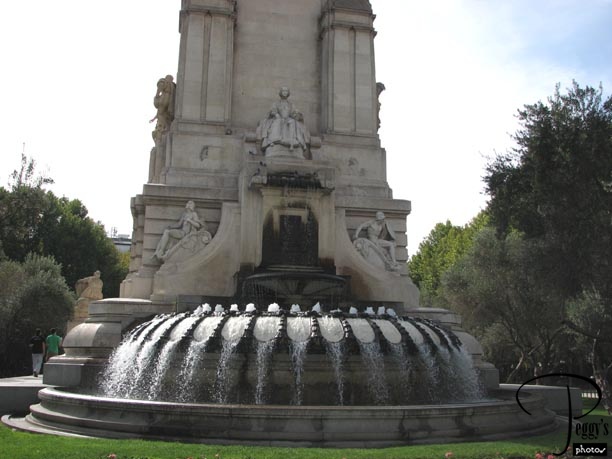
At the bottom of one of the obelisks in the plaza.

Plaza de Espana
Plaza de Espana
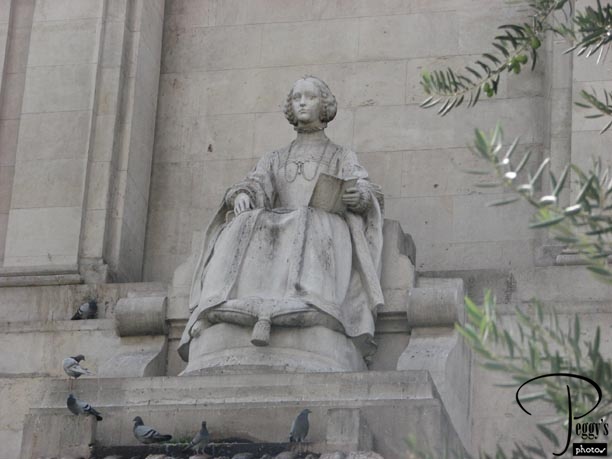
Close–up of one of the statues.

Plaza de Espana
Plaza de Espana
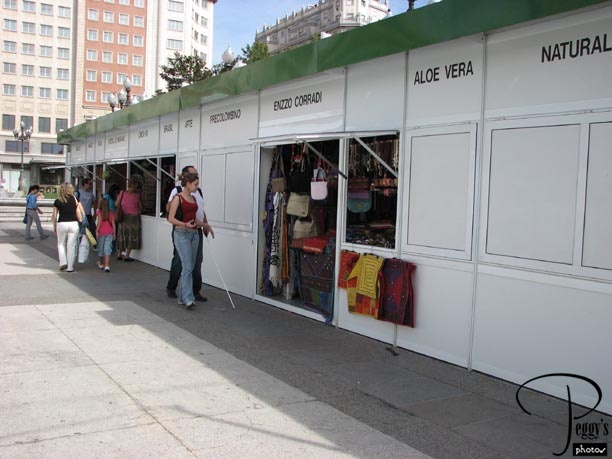
Some of the stalls of the Mercado de la Diversidad. Most of the stalls were closed.

Plaza de Espana
Plaza de Espana
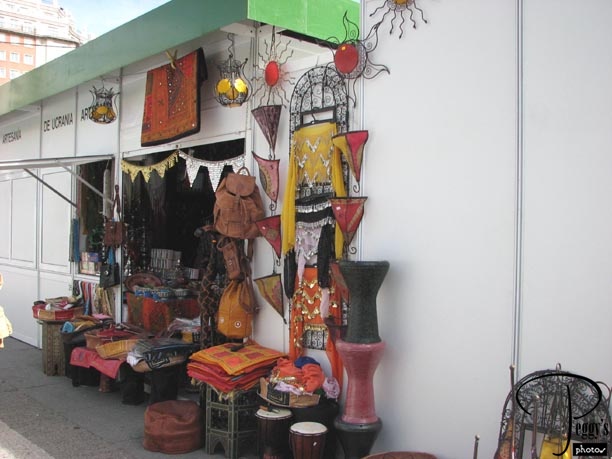
One of the stalls that was open.

Plaza de Espana
Plaza de Espana
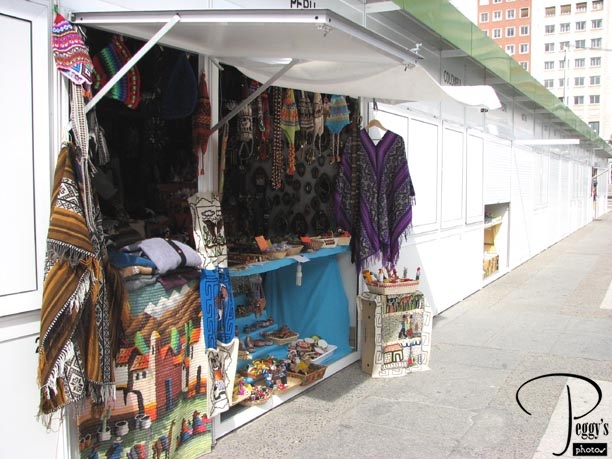
A store selling Peruvian items. I bought the woven wall hanging on the right bottom of the stall.

Plaza de Espana
Plaza de Espana
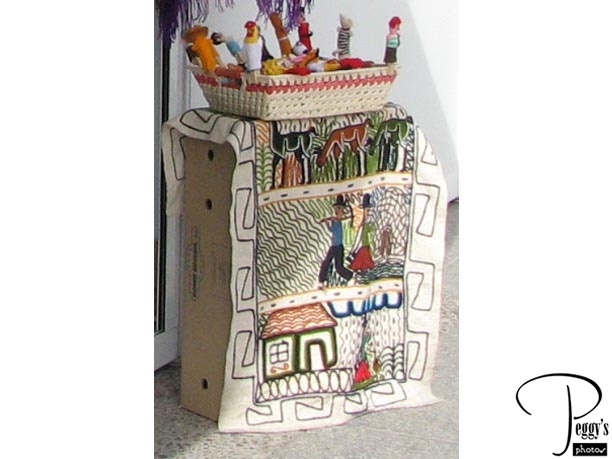
Close–up of the woven wall hanging.

Plaza de Espana
Plaza de Espana
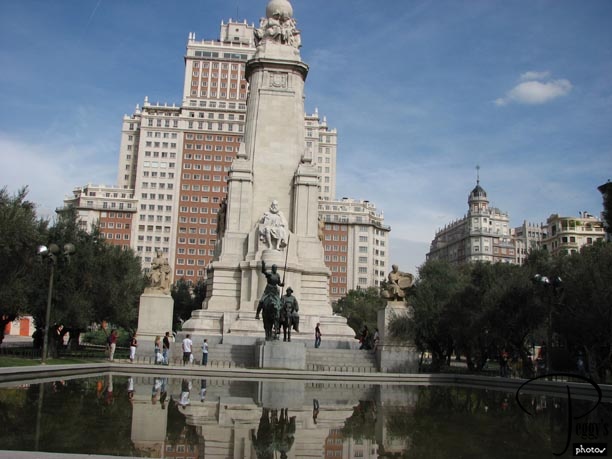
Another obelisk with statues of Miguel de Cervantes and his Don Quixote and Sancho Panza.

Plaza de Espana
Plaza de Espana
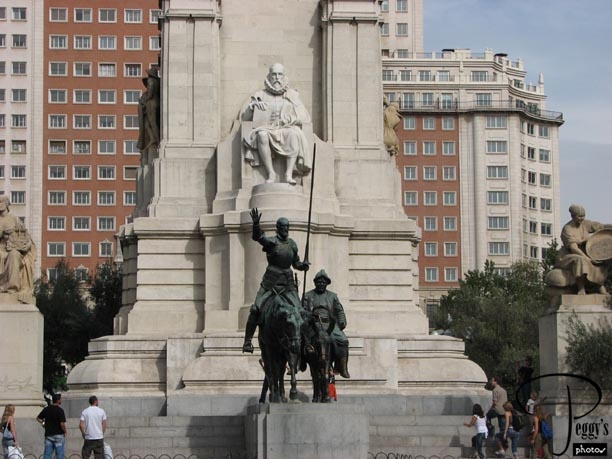
Closer–up view of the statues.

Plaza de Espana
Plaza de Espana
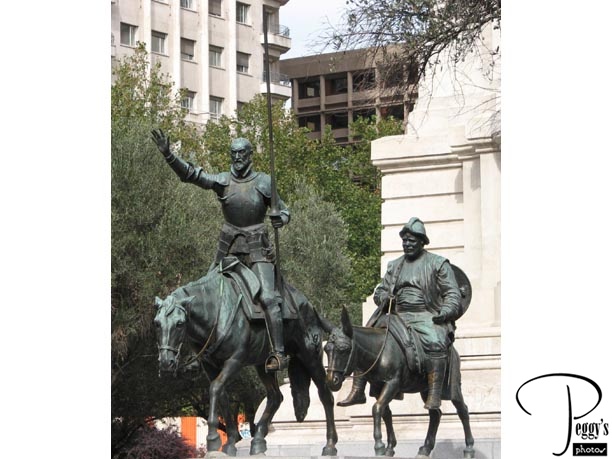
Don Quixote on his horse Rocinante and Sancho Panza on his donkey.

Plaza de Espana
Plaza de Espana
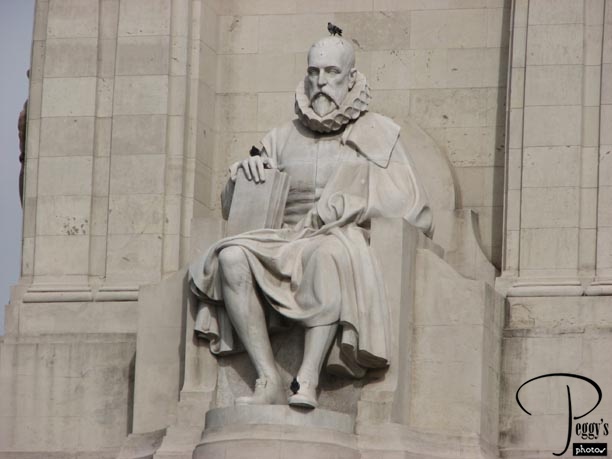
Miguel de Cervantes with a bird resting on the top of his head, another on his hand, and one more on his foot. Poor guy.

Plaza de Espana
Plaza de Espana
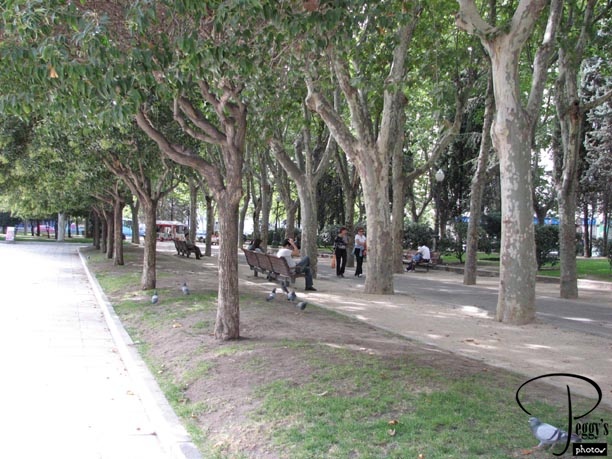
A walk through the trees in Plaza de Espana.

Plaza de Espana
Palacio Real
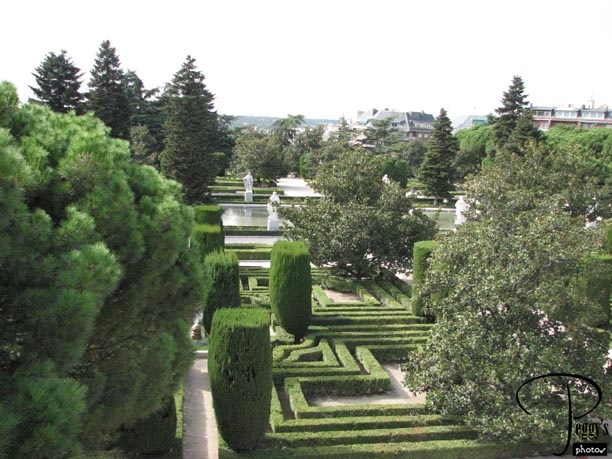
We were going to walk directly back to our hotel to get some rest before our Madrid at Night/Flamenco Dancers tour, but we found ourselves back at the Palacio Real, right around the corner from the Plaza de Espana. This is a photo of the Royal Gardens.

Palacio Real
Plaza de Oriente
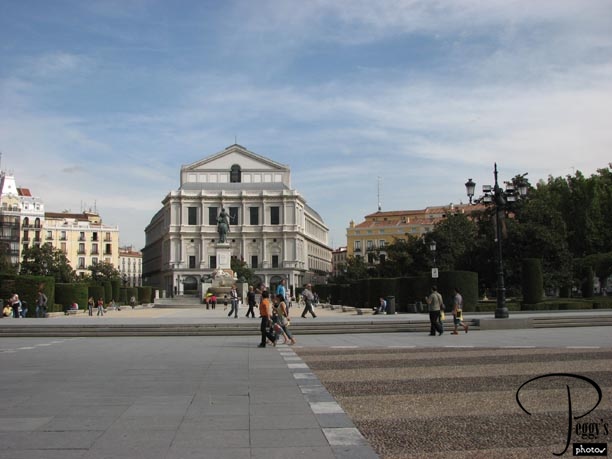
Looking backward from the Royal Gardens is the Plaza de Oriente, where I got a good photo of the opera house––Teatro Real, center of the photo.

Plaza de Oriente
Palacio Rea
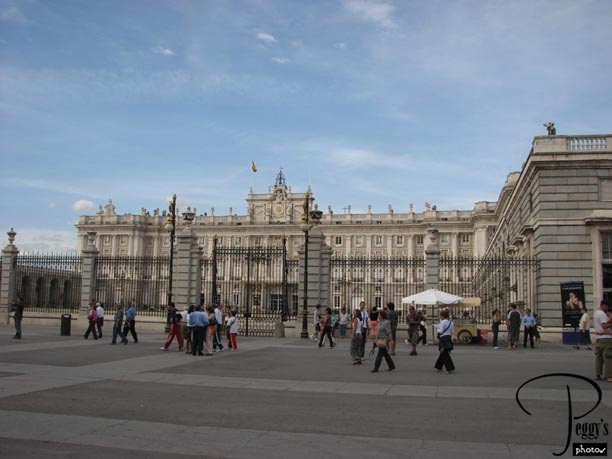
We walked to the palace gate to find out if the Palacio Real was open for visitors. It was. It wasn’t yet 4 p.m., so we still had time for a visit here. I put my photos of the inside of this 18th–century palace built by Philip V on a slide show on this website: Go to Slide Shows, Western Europe, Spain–1, “Madrid: Palacio Real.” The palace has 2000 rooms but only 24 of them are open to the public. Rick Steves’ rates the Palacio Real as Europe’s third greatest palace (after Versailles and the Schonbrunn in Vienna).

Palacio Rea
Palacio Rea
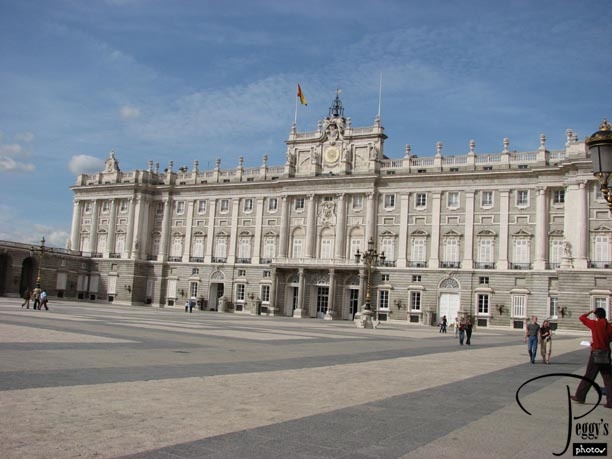
Another view of the Palacio Real.

Palacio Rea
Palacio Rea
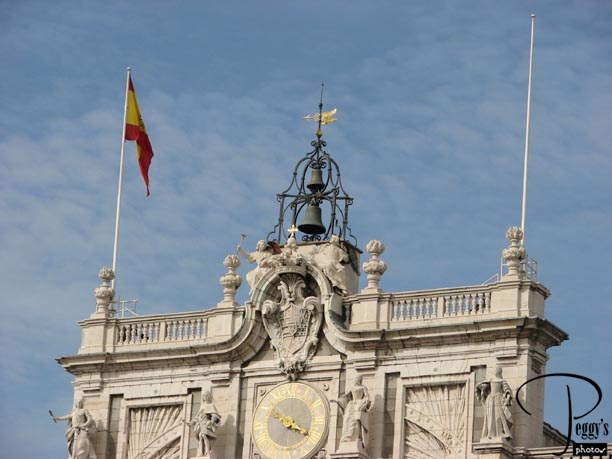
A close–up view of the clock and bells.

Palacio Rea
Catedral de la Almudena
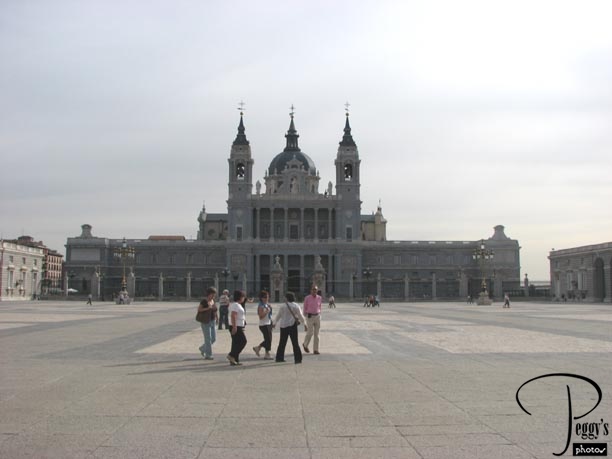
On the side of the square in front of the palace, the Plaza de Armas, is the Catedral de la Almudena, which started being built in 1879.

Catedral de la Almudena
Catedral de la Almudena
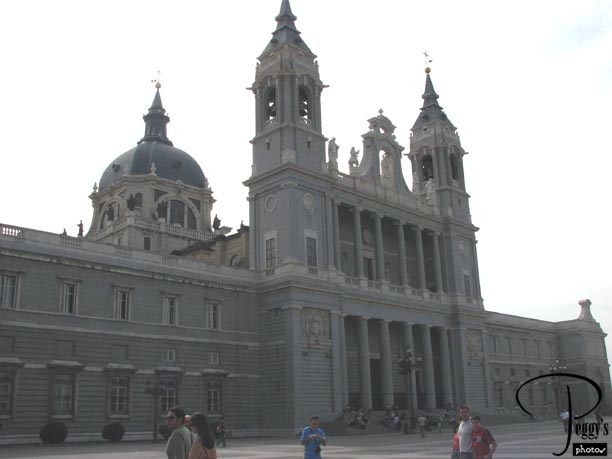
A closer–up view of the Catedral de la Almudena.

Catedral de la Almudena
Catedral de la Almudena
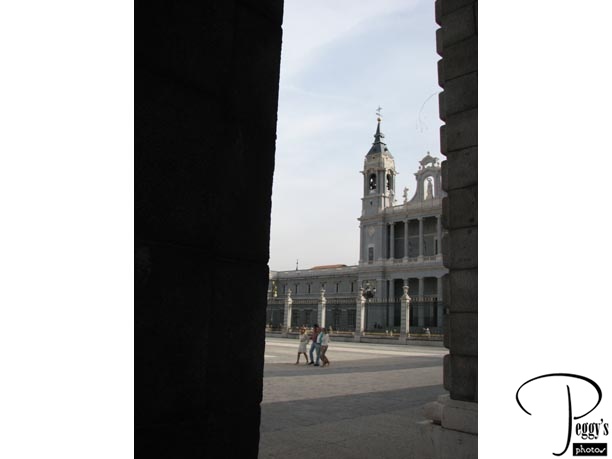
View of the cathedal through one of the palace’s columns.

Catedral de la Almudena
Catedral de la Almudena
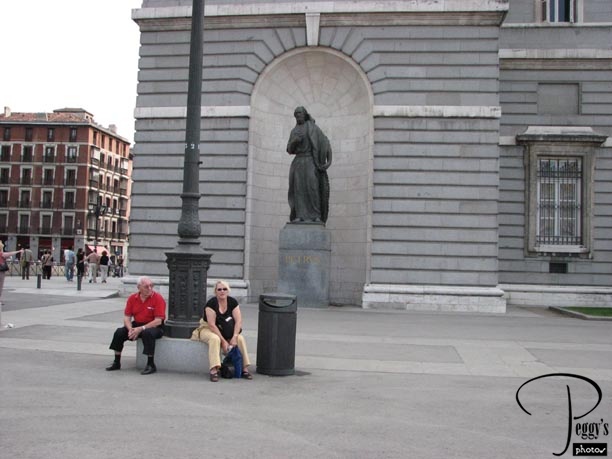
There’s Merrie, totally pooped. It has been a long day. I bought a Pepsi Light from a machine in the palace and joined her. It was now after 5 p.m. We finally got enough energy back to trudge to our hotel. After we arrived back at our hotel, we had a little over 2 hours to get ready for our night on the town.

Catedral de la Almudena
Madrid at Night Tour and Florida Park Flamenco
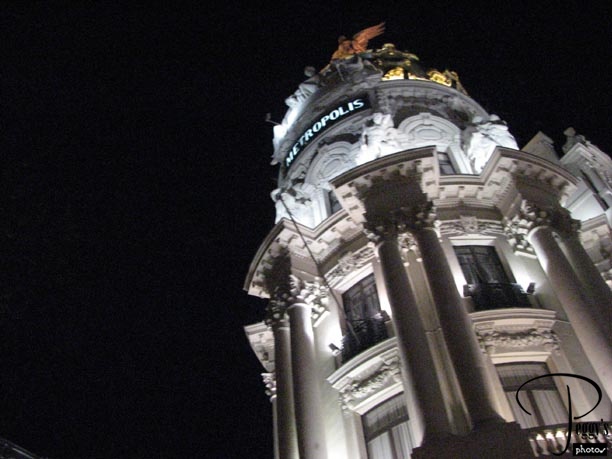
From our hotel, we walked back to the Julia Bus Company office on the Gran Via. We were first to go on a Madrid at Night tour. Madrid, at night, is very pretty but this is the only photo that I took from the bus that came out. We rode up the Gran Via and I have never seen so many people out on a street at night before. The Gran Via looked like a wild party street.

Madrid at Night Tour and Florida Park Flamenco
Florida Park
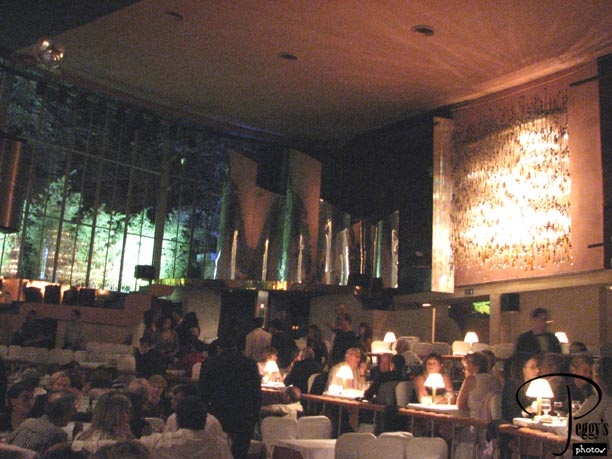
Florida Park is a place for tourists––we were tourists, so it was okay. First we had a three–course dinner––not too bad. Our tablemates were a couple from Italy. The wife did not speak any English. Wine was also complimentary. Photo: Inside Florida Park.

Florida Park
Florida Park Flamenco
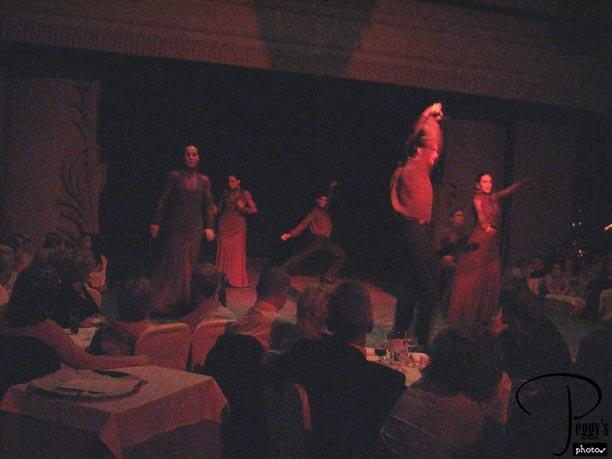
Then we were treated to a pretty good flamenco show. I have put on this website four movie clips that I took of the flamenco dancers. Go to Movies, Western Europe, Spain, “Florida Park Flamenco Dancers–1, –2, –3, and –4.” We left Florida Park about 12:30 a.m. When we reached the Gran Via, we ran into a monumental Madrid traffic jam––and this was about 1 a.m. in the morning. The tour people told us that they would drop us off AT our hotel, but the AT was really just on the Gran Via near one of the side streets that we would have to walk to reach our hotel. Merrie and I were somewhat hesitant about walking in Madrid after 1 a.m., but there were still so many people on the streets that we weren’t too uncomfortable walking back ourselves. Our marathon day ended into the wee hours of the next day.
